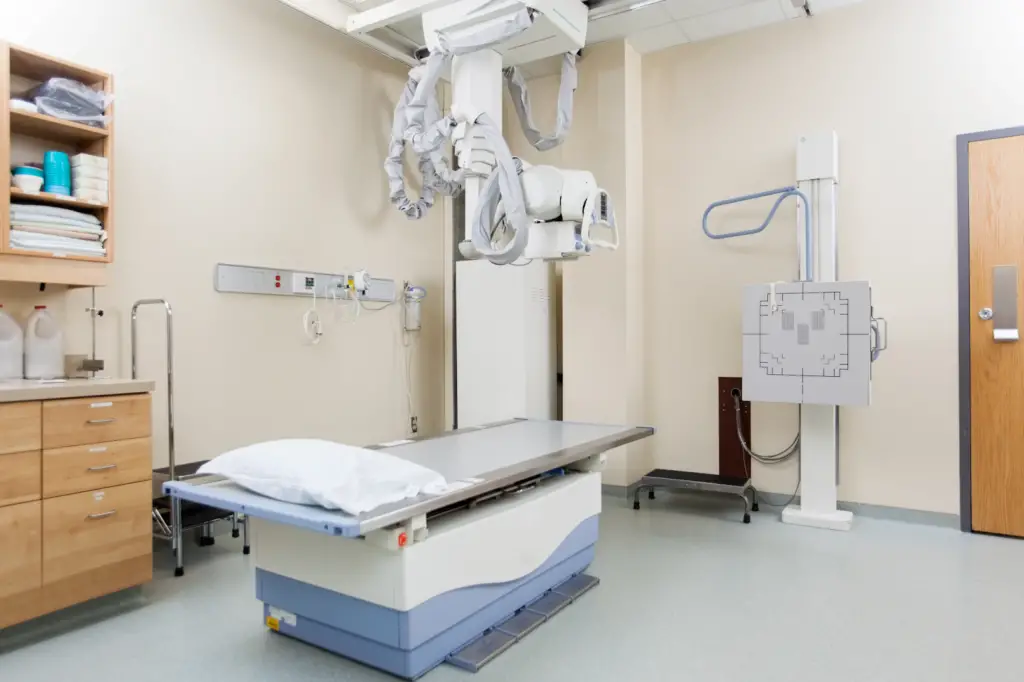Operating an X-ray machine in a clinic with limited space or small X-ray rooms presents unique challenges. Every bit of space becomes crucial when the room is compact and you’re using a floor mount system.
When tasked with complex imaging tasks, these obstacles might seem daunting, like cross-table laterals on post-op hips. However, practical and effective solutions can significantly improve efficiency and accuracy.
Getting to Know Your Equipment’s Limitations and Strengths
A crucial initial step is to understand your equipment thoroughly. This includes being aware of its limitations and its strengths.
For example, floor-mounted X-ray systems, commonly found in small X-ray rooms, might lack the versatility of ceiling-mounted systems.
Nevertheless, these floor-mounted systems are renowned for their stability, durability, and ability to produce high-quality images.

Mastering Patient Positioning for Optimal Imaging
Patient positioning is critical to successful imaging, even more so in small X-ray rooms with limited space. For cross-table laterals on post-op hips, consider the following positioning strategies:
- Standing Position: If the patient can stand, you can angle the X-ray tube while instructing the patient to raise the unaffected leg onto a stool. This position can provide an excellent lateral view of the hip.
- Edge of the Table Positioning: Positioning the patient at the table’s edge allows you to direct your tube towards the Image Receptor (IR), placed laterally to the hip.
- Using a Stretcher: If space allows, an X-ray on a stretcher might provide extra flexibility.
Leveraging Online Resources for Small X-ray Rooms
Online resources can be invaluable when seeking solutions for small X-ray rooms. Platforms like YouTube offer numerous videos demonstrating how to perform cross-table hip X-rays in small X-ray rooms.
Working Around Physical Restrictions in Small X-ray Rooms
Sometimes, the physical restrictions of small X-ray rooms may need alternative solutions. For instance, if your X-ray tube hits the wall when angling toward the femoral neck, consider these alternatives:
- Using a Wall Bucky: Consider laying the patient on a cart or table and using a Wall Bucky for imaging.
- Portable X-ray Use: A portable X-ray machine might provide the flexibility needed if all else fails.
Conclusion: Achieving the Best Outcomes in Small X-ray Rooms
Working with a small X-ray room and a floor mount system poses unique challenges. However, you can effectively navigate these hurdles by fully understanding your equipment, being innovative with patient positioning, and using external resources.

